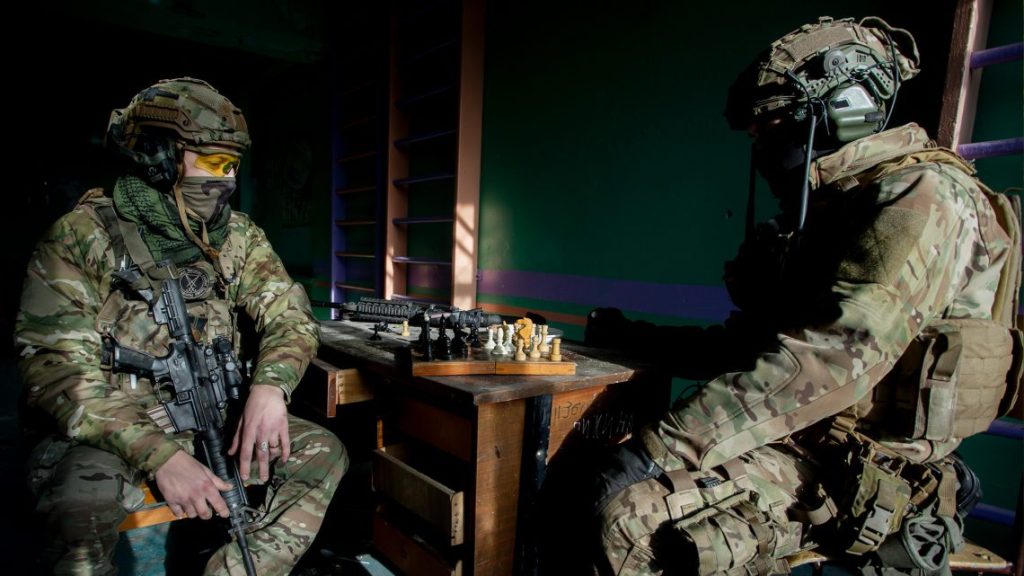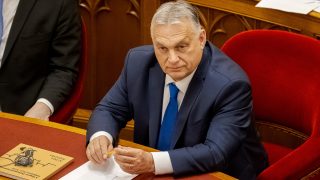One year ago, Vladimir Putin launched a full-scale offensive against Ukraine. The conflict has rocked the security of Europe and the entire world:
- with continental ground troop movements not seen since the Second World War began,
- eight million Ukrainians having been forced to leave their homes,
- the death of 8,000 civilians, according to UN data,
- while the conflict caused disruptions of global energy and food supplies.
Losses on both sides are significant, with the war’s end not yet in sight.
Numerous factors foreshadow the conflict
While the current phase of the Russian-Ukrainian war began a year ago, the conflict has been going on for at least nine years. Following the Maidan Square revolution and the overthrow of President Viktor Yanukovych, in 2014, Russia annexed Crimea, and war broke out in the east of Ukraine between pro-Russian separatist forces and the Ukrainian army. This turned into a protracted conflict whose intensity decreased every year until last year’s outbreak of total war.
In an interview with 24.hu, Partizán foreign policy expert and author of the Heti Feledy foreign policy newsletter, Botond Feledy, says that the Euro-Atlantic community is clearly responsible for the period from 2014 to 2022, as it should have realized that the Russians were not preparing for negotiations. The aggression was prepared ahead of time, and according to recently published intelligence, the orchestration had been going on for some time: Putin had been playing maskirovska (“disguise”) against the West since 2008’s war in Georgia, if not earlier.
According to Feledy, there were many signs predicating the war in Ukraine. From the Litvinenko murder and assassinations in 2006, to the use of military nerve agents in the Skripal case, and the blowing up of a Czech weapons depot in 2014, it all adds up to evidence that, from the Russian perspective, the range of deployable tools has broadened.
Russia tried to keep Ukraine within its sphere of interest via non-conflictual means, but failed. The last attempt was to undermine an Association Agreement with the EU, the withdrawal of which led to a political crisis and the Maidan Square revolution.
They tried, but failed to move Ukraine into Russia’s sphere of interest, which was considered an achievement from NATO’s perspective, since the military conflict with Russia had arisen in a conflict zone, not within the borders of the alliance. I realize that this assessment sounds pragmatic, but the fact that we are not talking about Estonia, or armed clashes along the Belarusian-Polish border, is an achievement,
Feledy believes.
A senior scientific associate at the Strategic Defense Research Institute of the National Public Service University, András Deák believes the conflict did not start in the Donbass. The full responsibility for starting the illegal war rests with Putin’s Russia, which, in addition to the 2014 Minsk Agreements ending hostilities, also violated the 1994 Budapest Memorandum. It states that in exchange for the transfer of nuclear weapons, Russia would guarantee Ukraine’s independence and the inviolability of its borders – but, simultaneously, the West’s behavior in the post-Soviet region was irresponsible.

“If you must identify a stepping stone, I would say 1991. How ironic it was that the dissolution of the Soviet Union took place with relatively little blood. We got away with five civil wars, and there was nothing in Ukraine. By the 2000s, we had forgotten what a treasure that quiet was, Deák argues, adding that the ideal situation would have been to maintain a gray area. “These societies did turn towards Europe, but if we look at the opinion polls before the Crimean War, there was a far-from-clear commitment to Russia, to the EU and definitely not to NATO.”
Nevertheless, both sides started to build spheres of influence, which posed questions to Ukraine about its future: NATO or non-NATO, Russian customs union or European free trade association? Deák believes that even before the 2013 political crisis, the Orange Revolution of 2004 and the NATO summit in Bucharest in 2008, at which Ukraine and Georgia received candidate status, emerged out of the same dilemma.
Russian military goals unrealistic
In the days leading up to the war, Putin recognized the independence of the Donetsk and Luhansk People’s Republics, and on the morning of 24 February, citing the demilitarization and denazification of the country as objectives, he launched a full-scale invasion of Ukraine.
While denazification is an elusive goal, and the neo-Nazi Azov Legion having been mostly destroyed during the siege of Mariupol, the Ukrainian army is now stronger than it was at the start of the war, according to retired colonel Dr. Zoltán Szenes, former chief of staff, president of the Hungarian Military Science Society.
Another unspoken goal was to achieve regime change, setting up a pro-Russian puppet government, for which they launched a large-scale offensive with four operational directions and 200,000 men. On the first day of the war, the Russians fired more than 700 ballistic missiles and drones at strategic targets and carried out strikes with about 75 bombers, but the plan that led to the 2008 Five-Day War in Georgia, failed. Ukrainian president Volodymyr Zelenskyy mobilized effectively, imposing a state of emergency and banning Ukrainian men between the ages of 18 and 60 from leaving the country.
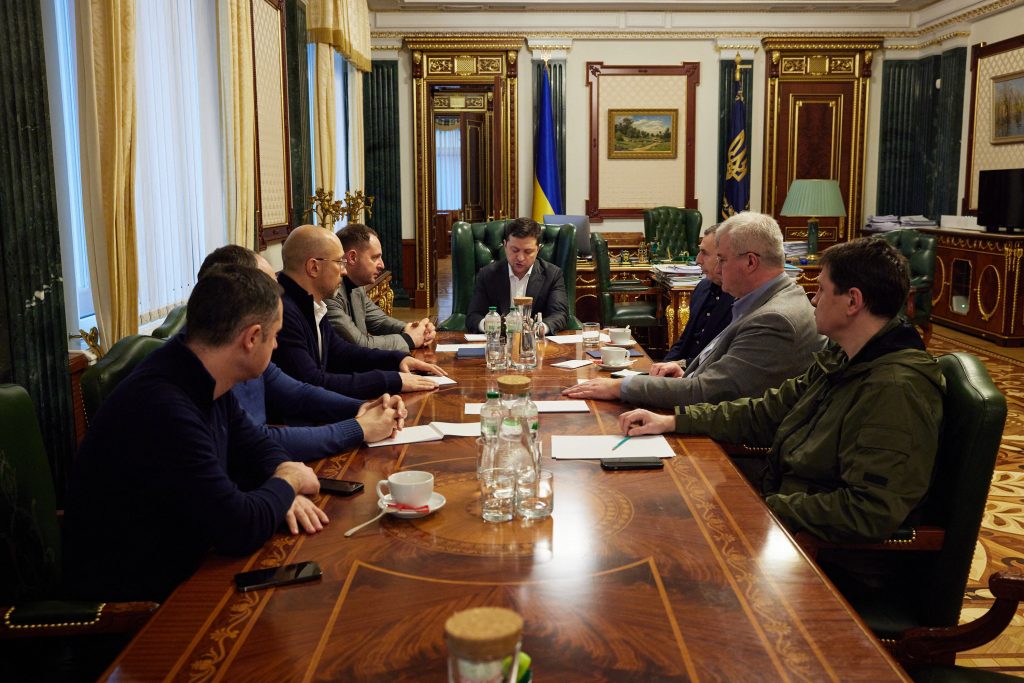
At the start, Russian ground forces numbered 280,000, while the Ukrainian army totalled 210,000. The Russian force proved to be insufficient to capture the country: the Russians failed the siege of Kiev and Kharkiv in the spring, and did not even advance to Odessa (the sinking of the cruiser “Moscow” in April, after a landing operation and cutting off Ukraine from the Black Sea became impossible). At the same time, it was possible to cut off Ukraine from the Sea of Azov in the south, and the Russians took control of Kherson County and approximately 60% of Zaporizhzhya County.
Szenes believes that there were several reasons for the Russian strategy’s failure:
- The first is the failure of intelligence, which he believes the Russian side has also acknowledged through the dismissal of 150 FSB agents in March. Presumably, Russian information was also needed in order to be able to evacuate Ukraine’s president in time to a shelter, evading the Russian special forces aiming to eliminate him.
- The belief that the Russian-speaking population – which makes up 30-40 percent of the country – would welcome the conquering troops with “salt and bread” in the same way as the population of the breakaway people’s republics greeted the peacekeeping forces in the days before the war, was also Putin’s mistake, Szenes says.“In contrast, huge demonstrations had already broken out in the Russian-speaking city of Kherson in March. Later, this gave rise to enormous uncertainty in the hinterland: a quasi-guerrilla war started, in which logistics and second echelons were attacked.”
- The third big mistake was that they did not count on a united Western response. On the day after the invasion, the European Council and NATO met just a day after the invasion, deciding to impose sanctions immediately. Szenes reminds us that after the March annexation of the Crimean Peninsula in 2014, the EU stalled until summer on its decision to impose the first sanctions.
He also draws attention to the fact that, due to unexpected difficulties, the Russians are constantly changing their political objectives, which mandates the military constantly reshaping its mission. After having given up Kiev and retreated from the north – leaving behind the horrors of the Bucha massacre – Russian leadership announced a new phase of the war in mid-April, after which the focus turned to the Donetsk basin.
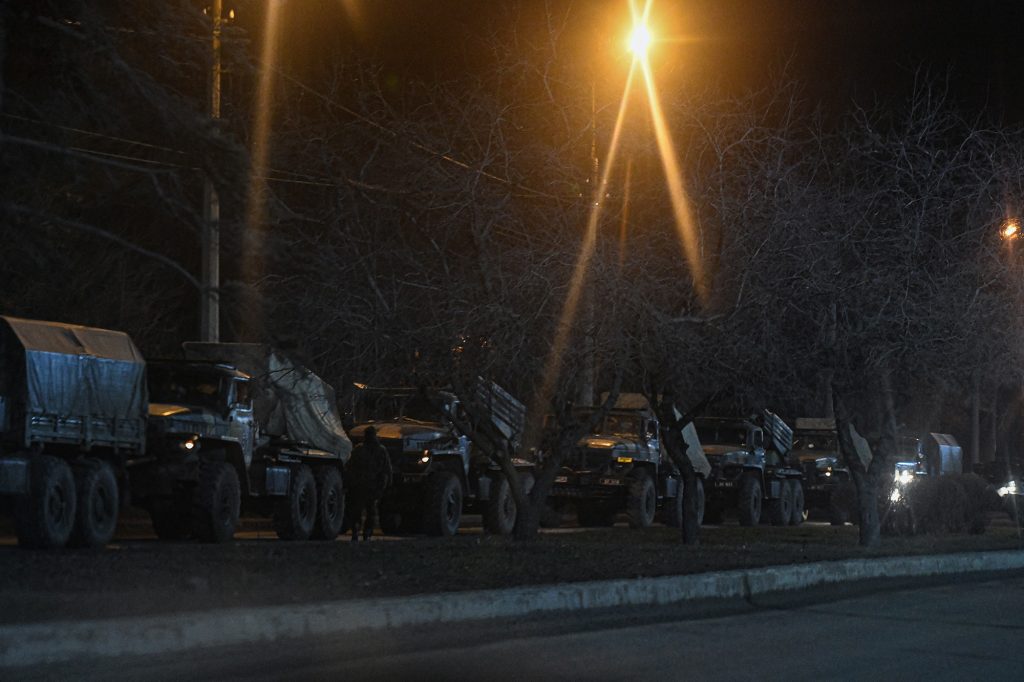
Russia goes on the defensive
Russia’s military operations did not go as planned. According to Szenes, this is evidenced by a spectacular breakthrough in September, when Ukrainian forces recaptured an area in Kharkiv county, the size of Bács-Kiskun, within just a few weeks.
In November, the Russians withdrew their troops from Kherson County to the other side of the Dnieper River, so they were forced to give up the only county seat they had occupied during the year of the war. In February-March of last year, 25% of Ukraine fell into Russian hands, but in the autumn, the Ukrainians recaptured nearly 10% of that (with the Russians recently having managed to win back 1% of it).
The Russians were counting on the Western powers not supporting the fight via kinetic means, equipment, or supplies. By comparison, anti-tank missiles, anti-aircraft missiles, and drones from the West had already appeared in the first phase of the war, and, later, troop air defense- and armored personnel carriers were sent to the front, while this year tanks are being transported (in fact, the Western allies were already discussing fighter jets at the Munich Security Conference). Szenes says the turning point was July, when HIMARS appeared on the battlefield. The US’s multiple-launch rockets were able to strike targets at a depth of 80 kilometers, which disrupted Russian logistics systems installed close to the line of conflict, meaning ammunition supply points had to be moved further back. Due to the weakening of supply lines, a mapping of the hostilities on Google shows that the number of Russian land maneuvers has been decreasing since July. As Szenes sees it, the surrender of Kherson County in November was also due to this: bridges, ammunition depots, supply routes, and command points were destroyed extremely effectively by the Ukrainians, so the Russians were forced to withdraw their troops to avoid annihilation.
Russia’s political goals had to adapt to the new situation. The Russian army more or less controls the territory of Novorossiya, east of the Dnieper, created during the reign of Catherine the Great. Along with the Donbass, where nearly all of Luhansk and 60% of Donetsk counties have been occupied since July, they began to concentrate on keeping control over this region, with the annexation of four counties, which was confirmed in October after contentious referenda on the issue.
All this did not reverse the course of the war, as the amount of military force was insufficient. From the time they began strategic bombing targeting Ukraine’s civil infrastructure in October, they switched to military and strategic defense until mid-January. Now, it’s apparent that since January, military activity has been the focus: they have occupied several settlements, including Soledar, and it is conceivable that Bahmut, which is encircled, will also fall soon,
explains Szenes.
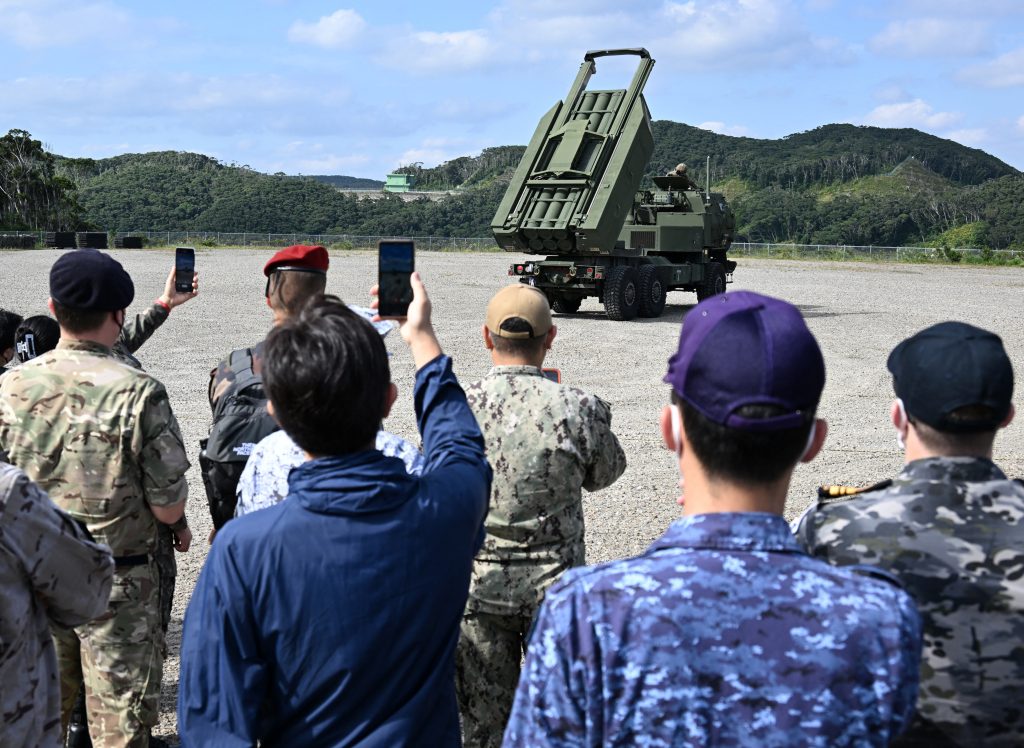
Szenes adds that according to the Russian narrative, they are now fighting a war not with Ukraine, but with the West, one which does not allow Russia to “enforce its security interests.” On Tuesday, Putin spoke in Russia’s Federal Parliament, pointing the finger directly at the West bearing responsibility for the war having broken out.
A protracted war likely, with no breakthrough expected
According to news reports, the Russians are preparing for a large-scale offensive, while the Ukrainians are preparing for the reconquest of new territories this forthcoming spring and summer, but Szenes does not expect a breakthrough on either side. As he sees things, the Russians are no longer strong enough to cross the Dnieper, and it would be significant if they succeeded in annexing Donetsk County. It is not believed that there will be strength for more than that, since the taking of the mining town of Soledar, which is strategically important only for the encirclement of Bahmut, required great losses.
“It will be a protracted war. The prospect for a political settlement depends on what results they can achieve on the battlefield. In order to force the other party to negotiate, they must suffer such losses, be so weakened that they themselves realize that the situation must be resolved through diplomacy. I expect that the offensive advances will be realized by summer, when it will be clear what kind of results they will bring, and from there a clearer picture will emerge,” says the former chief of staff. He believes that sooner or later diplomacy’s role will once again increase, but experience shows that such half-frozen conflicts can stick around for a long time. “This is reinforced by the fact that, according to what we know now, the objectives of Russia and Ukraine are irreconcilable: the Ukrainians originally wanted to restore the borders included in the Second Minsk Agreement of 2015, but now they want full sovereignty, including Crimea.”
According to András Deák, there is no quick escape from the conflict on the Russian side, only the prospect of slowly extracting itself, in the wake of significant military wins. One such minimal goal could be the control of Donetsk and Luhansk counties. On the other side of the Dnieper, the two other counties, Zaporizhzhya and Kherson – which are already officially part of the Russian Federation’s administrative system – are logistically much more difficult to maintain.
As Deák sees things, at the beginning of the war Russia wanted to recreate the action in Crimea, but a stalemate has developed recently: “There is little chance that the front will move in any direction, nor that they [the Russians] will occupy large cities with populations numbering in the hundreds of thousands or millions.”
Hostilities between the two sides have been going on for the ninth year in the Donbass. Over that time, both the Ukrainians and the pro-Russian separatists built deep, technically sophisticated, underground defense infrastructure systems. That’s why desperate battles at Bahmut have been going on for half a year now: either side must seize towns that have, in practice, been turned into fortresses. András Deák notes that the number of personnel the Russian side can put on the chessboard is almost endless, certainly much greater than that of the Ukrainians, who are at the outer reaches of their mobilization. Concurrently, although the Russians’ defensive ability is enormous, they can’t occupy territories with only manpower; advanced military technology is a must, but appears to be an advantage the Ukrainian side possesses.
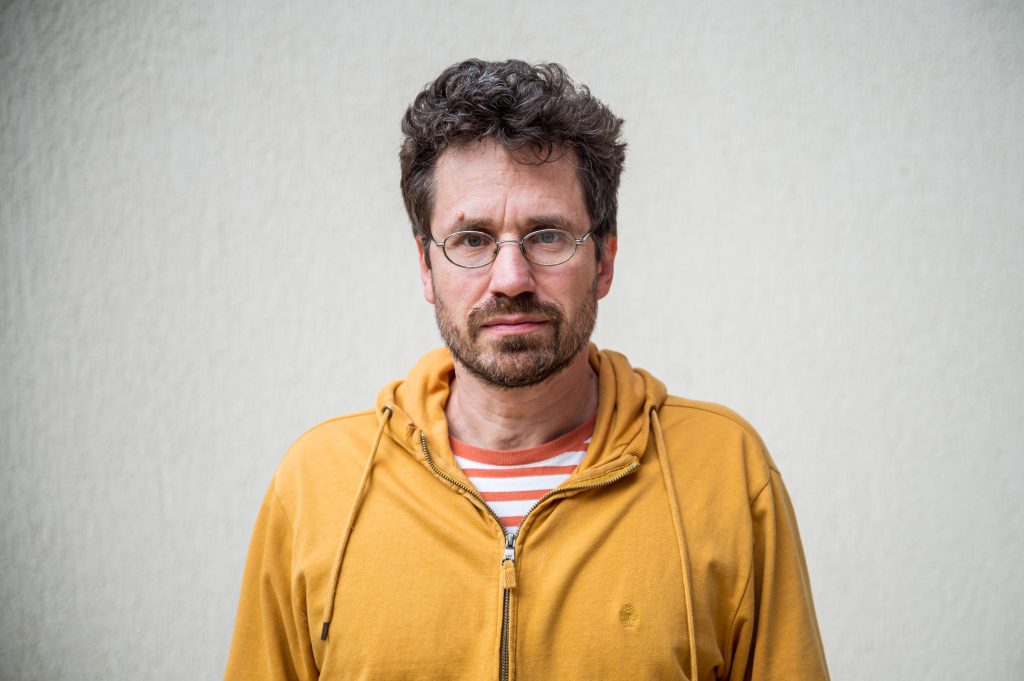
In September, the Russians mobilized almost 300,000 men, almost twice as many as were sent to the front in the first wave on 24 February (in addition to the fact that 700,000 men of military age abandoned the country’s border upon hearing the news). Moreover, the Russians recently decided to increase the number of their military personnel to 1.5 million this year, which means at least a doubling of the country’s ground forces.
According to Zoltán Szenes, a change in the manpower ratio will hardly be able to offset the Russian losses, which are significant in all categories, including the officer corps, with the exception of the navy and, in part, the air force. Thanks to better technological equipment, the Ukrainians have destroyed three- to six times more Russian equipment than the other way around, while the ammunition used by the Ukrainian artillery is a third that of the Russians. All of that adds up to the Russians having lost 60% of their tanks and 40% of their armored personnel carriers in one year.
On the other hand, the ever-increasing technological advantage is unlikely to materialize on the Ukrainian side any time soon, because Western technology arrives to the front only very slowly. At present, only 45 Western tanks are on their way to assist the Ukrainians’ efforts in the spring, instead of the over 100 which were promised. Last December, the commander-in-chief of Ukraine’s armed forces, Valery Zaluzhny, said that at least 300 Western tanks and 600 armored personnel carriers could exert a significant impact on the course of the war.
Russia’s economy not collapsing
In response to the aggression in Ukraine, the Western powers introduced comprehensive sanctions against Russia. The EU has so far adopted nine sanctions packages, which introduced restrictions against 1,386 individuals and 171 organizations. Among other things, the delivery of crude oil and refined petroleum products to EU territory was prohibited, and – in consultation with the United States and Great Britain – the largest Russian financial institutions were excluded from the SWIFT cooperative, the international communication system between banks. According to the official stance of the Hungarian government, the sanctions have not achieved their goal – as the Russian economy did not collapse – but instead have resulted in an energy crisis and runaway inflation across Europe.
András Deák notes that indeed there were prognoses projecting an 8-10% decline in economic growth, but that’s not what happened. There had been a 3.7% real economic decline in Russia in the second quarter, and a 4.1 percent decline in the third quarter (while GDP at current prices still increased due to high oil and gas prices).
Economic collapse is difficult to interpret, since much harsher sanctions regimes are ineffective, for example, against Iran. Sanctions also assign a significant economic cost to the war. Last year was very good in terms of commodity prices, partly due to the geopolitical risk premium, which has now run out,
says Deák, adding that the biggest challenge for Russia is the country’s size. “Such a sudden and comprehensive sanctions regime has never been used against that big of an economy, so the criteria for success must be measured against that fact.”
Stopping the war is hardly a realistic goal, but the long-term downsizing of the Russian civilian and military industry is. According to analyses, the restriction of trade with developed Western economies has forced Russian economic actors to resort to “regressive import substitution,” which means using less technologically advanced tools based on their own resources.

According to Deák, the sanctions will not appear as the one-off symptom of a crisis, as with the Covid epidemic, but their effects are much more apparent based on GDP sub-indices: production has only collapsed in sectors that are not of great importance within the country’s total GDP, (for example, aircraft and passenger car production). “The Russian economy will indeed have technological problems, but it is not yet clear how and at what cost they will be able to adapt to this. Several aspects reveal that the loss of growth is inevitable: for example, Russian imports fell, which led to a decline in investment sentiment,” he says.
As Deák sees it, a longer recession and then stagnation could set in in a Russian economy that is not doing very well in the first place.
There will be no quick rebound, a fact which in itself could be considered a success as a result of the sanctions.
Russia must wage war with less and less money
A significant proportion of Russia’s export earnings comes from raw materials, and even before the war, the EU was the Federation’s largest trading partner. In 2021, the last year of calm before the war, 70% of Russia’s gas exports and half of its oil exports went to Europe, while 39% of the EU’s gas reserves came from Russian sources.
The Russians reduced supply delivered to Europe by 80%, but while the volume of deliveries decreased by a fifth, the price increased fivefold. However, by the beginning of 2023, European price levels – if not having completely returned to normal – will only be three times their pre-war level, while the Russian volume remains very small. The EU member states started the heating season with full storage tanks and without supply disruptions, i.e. they successfully adapted to the drastic reduction in imports from Russia.
According to Deák, in this regard, Gazprom’s income will decrease not only compared to the exceptionally profitable 2022, but also compared to the previous years:
And crude oil sales will not save the Russians either. By the beginning of the year, Brent crude had dropped to USD 80-85 (following prices exceeding USD 100 seen over the summer), so the Russians were compelled to offer Urals oil at a record discount. He explains, “Due to the EU embargo, maritime crude oil has to be transported thousands of kilometers further by tankers (primarily to China and India), which has led to a significant increase in transportation costs. In this way, the Russians must contend with an aggregate decrease in income, which means there is less and less money available to pump into the war machine.”
However, Deák warns against drawing far-reaching conclusions about the outcome of the war. For the time being, the economic cost for the Russian side will definitely increase, while in the West, the costs incurred in the sanctions war have gone down, mainly due to the favorable development of gas prices.
Still, know one knows how persistent the Russians could be. According to a December survey by the Levada Center, a Moscow polling institute, three quarters of Russians (74%) support Putin’s “special military operation” in Ukraine. Deák underlines:
“There is certainly no overwhelming anti-war sentiment in Russia. There are individual and non-collective responses to the war.”
He adds that losing the war would result in a real cost, since the majority of Russian society is nationalist and imperialist, while the proportion of those with democratic-liberal convictions is only around 10-15 percent. “Additionally, they are not very organized. A greater threat to the system may be the rise of nationalists,” he explains.
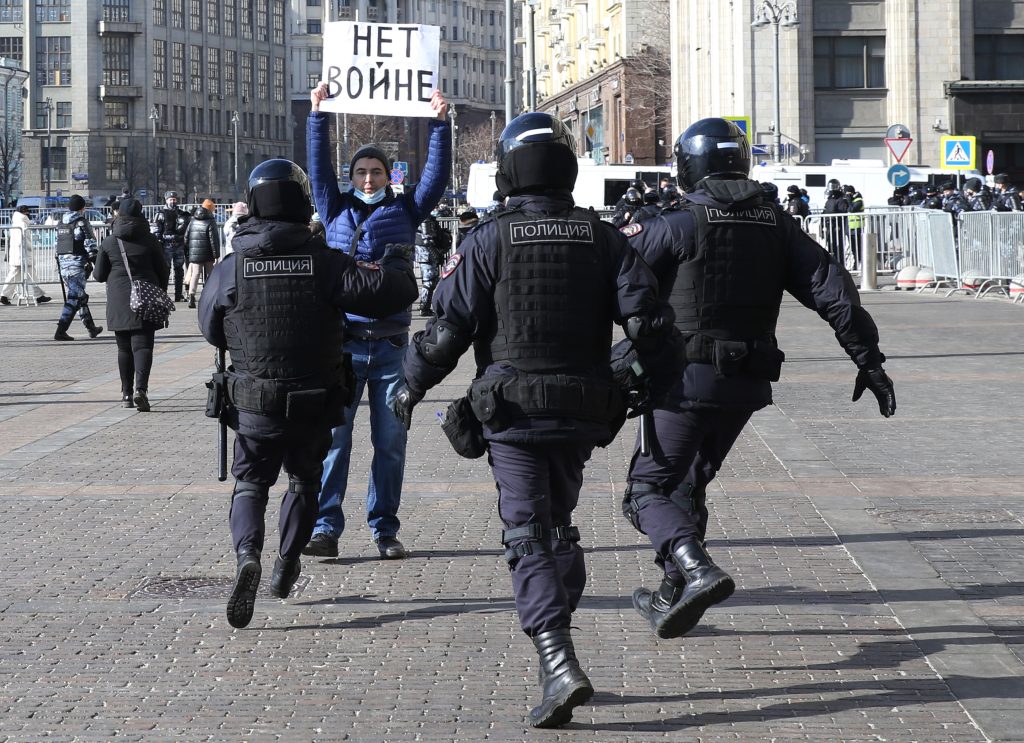
The West’s goal: Weakening Russia strategically
As the war has progressed, emphasis has shifted from defending Ukrainians to regaining lost territories. Via recently announced tank deliveries, the Western powers have crossed another psychological barrier: from the beginning, their philosophy was to provide military equipment for defense, but the tank is considered a classic offensive weapon.
Zoltán Szenes draws attention to the fact that, in addition to military efforts, the functioning of Ukraine must also be ensured. He reports: “In 2022, USD 120 billion in aid came to the war-torn country, and a smaller portion of that, roughly USD 45 billion, went to arms. At the Munich Security Conference, the head of the International Monetary Fund said that the restoration of Ukraine’s infrastructure will require between USD 700bn and USD 1 trillion dollars. In addition, the restoration of critical infrastructure that has suffered huge losses could take years.”
According to Szenes, the year 2024 will be a crucial one for the conflict. “At that time, not only will elections be held in Russia and Ukraine, but also in the European Union and the United States,” he explains. Szenes believes that Zelenskyy has a very strong position in Ukraine, while in the US, the question is who the Democrats will choose as Joe Biden’s successor, as well as whether Washington’s solid support for Kiev will last in the event of a Republican victory (5-6% of the annual US defense budget is bolstering Ukraine). “As domestic political struggles intensify, attention is typically focused on the elections (in each player), and each new government may hold a different view of the war. It is telling that, according to public opinion polls, the Western European and American populations’ willingness to support Ukraine is already on the wane.”
Regarding the role of the Western powers, Botond Feledy emphasizes the importance of diplomatic alignment: NATO is not officially a belligerent party (Zelenskyy has not even met the Alliance’s secretary general in Brussels), and to a much greater extent support has come from the member states rather than from the defense alliance. He explains: “In the Euro-Atlantic political sphere there is no consensus on the limits of support. Thus, what we consider the setting of objectives is actually the result of ongoing discussions, negotiations and crisis management. Meanwhile, the Russians are working hard to spinkle salt into these political fault lines.”
The American wording regarding the war, aiming to “strategically weaken” Russia, is the most malleable. The ideal outcome would be to force a regime change in Russia, enabling the EU to be able to enter into economic or political contracts from a stronger position with a somewhat less aggressive Russian Federation – however, according to the latest intelligence, this scenario is highly unlikely. And the USA wants to focus more on the strategic challenge from China.
However, at present we are at a point where Russia can neither win nor lose the war. The lessons from the first year are that there will be no Russian revolution, and the Russian economy will not collapse as much as we had hoped,
says Feledy.
He adds that Western military technology, and logistical and intelligence support are essential for a successful resistance, but Ukrainian morale is an equally important variable in terms of the outcome of the war. “How to manage the spring Russian offensive is a worthwhile question, because the Russians are apparently not afraid to continue shoving meat into the grinder,” he explains
Hungary fighting a symbolic battle
Hungary’s official position is clear: while the government condemns Russian aggression and has stood up for Ukraine’s sovereignty, simultaneously Viktor Orbán’s government departs from pan-European doctrine on several issues. Hungary has not allowed offensive weapons intended for Ukraine to pass through its territory, its parliamentary majority has still not ratified NATO membership for Sweden and Finland, while Russian military aggression and the weaponization of gas supplies (which had already begun in the fall of 2021) are not considered the cause of Europe’s energy crisis; the sanctions are to blame. All the while Hungary’s pro-government media typically echo narratives emanating from the Kremlin.
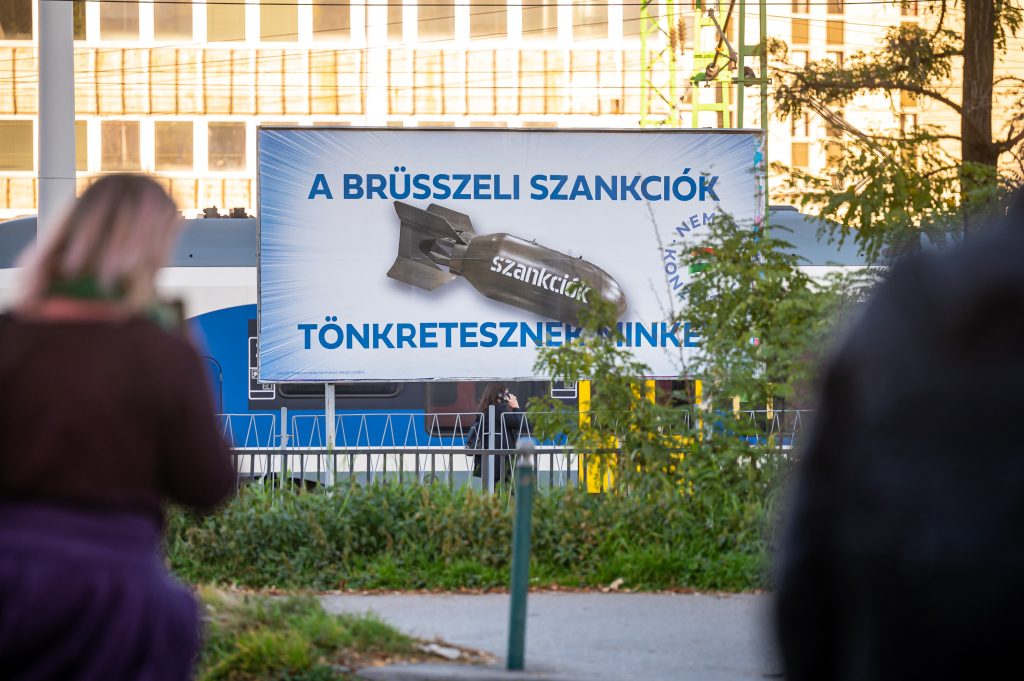
The Orbán government is demanding an immediate ceasefire, which, according to Feledy, based on the current state of the war, would establish a favorable status quo for the Russians, and would not serve as a deterrent. “After all, if the conflict were to be frozen, approximately 20% of Ukraine’s territory would remain under Russian occupation, along with millions of civilians and a significant part of the country’s assets. The West is striving to conclude a ceasefire agreement at a moment that is less favorable for the Russian side, so that its positions are weaker for gas price formation or a possible future conflict. As long as the perception is that something can be done to combat Russian forces in Ukraine, Western arms shipments will not stop,” he says.
Instead, the government has stuck to its self-defined domestic political narrative, which has basically conveyed pro-Russian messages ever since the Paks nuclear plant expansion process began in 2014. However, Hungary has not stood in the way of the nine collective decisions embodied in the sanctions so far, thus, the nonconformist journey is manifested in symbolic components of communication, the active relations between Minsk and Beijing, in nurturing the relationship with Rosatom, and the like.
Meanwhile, Ukraine was basically connected to the European electricity grid through Hungary, and there was a time when Hungary supplied gas to the Ukrainian grid. The ban on direct arms shipments, tension between Orbán and Zelenskyy, the political conflict over Ukraine’s language law, the domestic political capital created from it, and the spectacular strengthening of Hungarian-Russian relations in recent years, tilt the scale to one side of the balance. The Russian room for maneuver has not decreased in Hungary either, since, for example, domestic investigative reporting has revealed that more Russian diplomats work in Hungary than before the war, compared to the other Visegrad countries.
Feledy notes that Orbán’s position is not necessarily doomed in Europe, because inflation and energy price increases are hitting even the lower tenth income groups in Western societies, so even a political turn in the upcoming elections cannot be completely ruled out.
The world will never be the same again
The Russian-Ukrainian war is not only a big war according to all scientific parameters, but also a global confrontation between the West and the non-West. A huge battle is raging in the political, diplomatic, informational, economic and cyber arenas, but also in soft areas, for example, regarding the participation of Russian athletes in next year’s Olympics in Paris. This is apparent in economic relations and in UN votes,
explains Zoltán Szenes.
Russian aggression has ended the post-Cold War world order based on economic and trade relations, and opened a new chapter in world politics, one in which international relations are again the center of gravity for security policy.
Botond Feledy believes that the war in Ukraine is actually just one front in an overarching Euro-Atlantic geopolitical struggle. The outcome of the Russian-Ukrainian war will be decided not only by “the amount of iron on the front,” but also, among other things, by how the conflict with China unfolds, which “could stretch the limits of rare earth metal supplies and other critical raw materials at any time.”

In the emerging new world order, the uncoupling of military, political and economic borders is becoming increasingly complicated. According to Feledy, in this regard, the interests of the EU and the United States do not overlap one hundred percent (which is apparent in the debate surrounding the American Inflation Reduction Act, and the relationship with China may also be an overriding issue), but the asymmetrical relationship between the two centers of power is hardly in question.
As Feledy sees it, in terms of securing supply chains, the American concept of restricting advanced technologies to within the Euro-Atlantic bloc is predominant. This is evidenced by recent developments: Japan and the Netherlands are also introducing bans on chip manufacturing equipment sent to China, as well as the issue of battery and solar cell production in Europe independent of Chinese technology.
In addition to capital and financial transfers, the most effective means of enforcing the policy of the US bloc is the use of technological supply chains as a weapon. In addition to capital and financial transfers, the most effective means of enforcing US alliance policy is the weaponization of technology supply chains
“Whether we can get there – and this is the end-game – within certain alliance circles, for example the US alliance with the Far East, the Quad (Quadrilateral Security Dialogue, with the participation of Japan, India and Australia – ed.) or our Euro-Atlantic alliance, different hardware devices will be used, with different types of development technology, and some geopolitical circles may end up in separate supply chains.”
We can also say that those who do not participate in commercial obstruction also stay out of technology transfers,
says Feledy, adding that the race is already underway and the transition period will be incredibly chaotic.
Coming out winners of the obstruction
Feledy contends that even in Hungary consensus on accepting the geopolitical interference as an external circumstance is apparent – an idea that echoes the foreign policy stance published by Balázs Orbán as well as the statements of left-wing politicians in Hungary. The difference lies in how Hungary reacts to this: do we try to stay out of it, or is it better to integrate more closely into the North-Atlantic sphere of influence?
Hungary’s experience since 1956 has been that it is possible to stay out of superpower politics if it is in the interests of both blocs. That’s Switzerland’s history, not Hungary’s,
Feledy explains.
As an example, he offers the foreign and trade policies of the countries in the Far East, where in recent years choosing has turned from mild pressure to strong. As a result, the Philippines and Australia have also pivoted towards the United States: the former getting on Beijing’s nerves by hosting an American airbase, and the latter pulling out of the “One Belt, One Road” initiative, saying that the global Chinese infrastructure development program does not match the country’s own foreign policy interests. Both Japan and South Korea have made spectacular commitments to Washington, but there are areas where the match has not yet commenced as of yet.
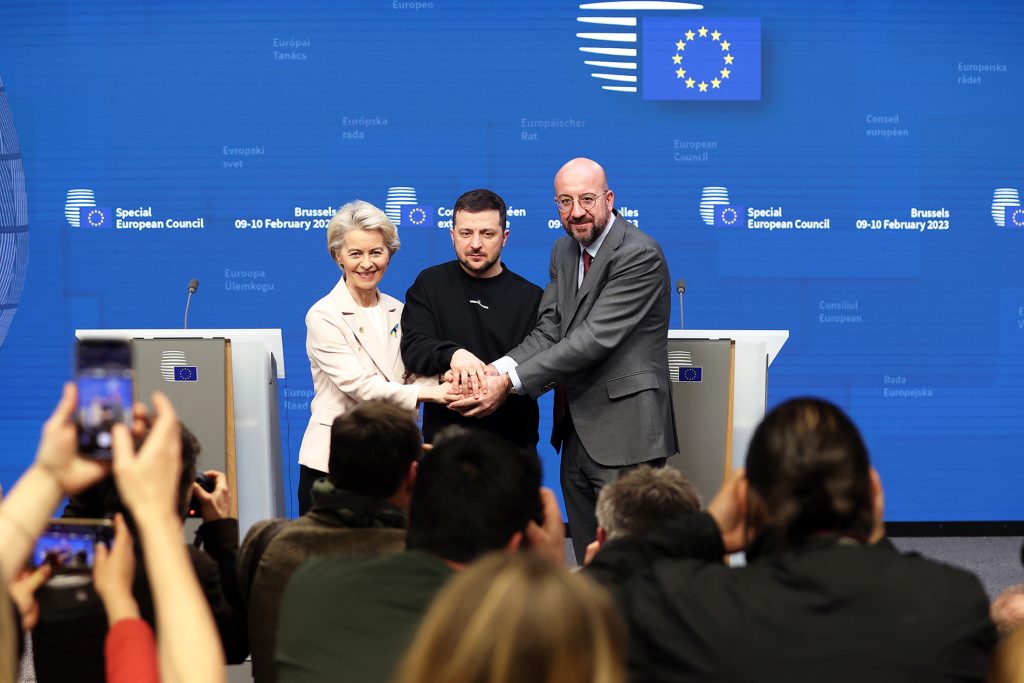
Splitting off into blocs, however, can lead not only to a narrowing of sovereignty and national freedom of movement, but also opens up specialized opportunities, including for Hungary. Overwriting the outsourced capitalist structures that favor multinationals and promote globalization can benefit the local. Feledy believes that if the EU is able to build the necessary semiconductor and battery production capacities on its own territory, then new jobs will be created – including additional blue-collar jobs in the service sector – and supply chains will also be unified geographically.
There is a winning outcome in this game for the Union. Whether this can be achieved politically with the community’s current polarization is another question. We still have a choice; it’s not a one-way street,
he adds.
